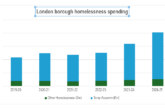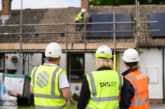
With global temperatures rising at an alarming rate and homes producing 40% of the UK’s carbon emissions, we look at whether a fabric first approach to retrofitting homes is the best strategy. Here, Steph Willis, a Data Scientist at Sero, presents an alternative approach, which prioritises reducing carbon emissions and decreasing energy bills at a realistic upfront cost to enable faster uptake.
Historically, a fabric first approach to retrofit made sense in the UK, but several key developments mean this is no longer the case:
- Heat pumps can now decrease energy bills because gas prices have risen faster than electricity prices, and heat pump performance has improved.
- The carbon intensity of the UK’s electricity grid has plummeted, so replacing a gas boiler with a heat pump will now more than halve a home’s carbon emissions.
- Getting off gas has become a priority following Russia’s invasion of Ukraine.
These factors mean that we should be accelerating high quality heat pump installations, not delaying them.
But wait; do heat pumps actually work in poorly insulated homes?
Yes. All a heat pump needs to do to keep a home warm is to provide heat at the same rate the home loses it. A poorly insulated home might need 20kW of heating on a cold day, and there are heat pumps that can produce 1,000’s of kW of heat. So, there is absolutely no problem finding heat pumps with adequate power to heat a home.
It’s all about the radiators
This myth is really about radiators, and the ‘flow temperature’ of the water running through them. Heat pumps can produce very hot water but doing so reduces their efficiency. The lower the flow temperature, the more efficient the heat pump, lowering both energy bills and carbon emissions. But radiators running at a lower flow temperature emit less heat. You need to offset this by:
1. Changing how the heating is controlled so it is on lower, for longer
2. Increasing the radiator area
3. Improving the home’s insulation
So, what is the right approach?
The cheapest way of ensuring that a heat pump running at a low flow temperature can keep a home toasty will normally be a combination of changing how the heating is controlled, increasing the radiator area, and doing easy insulation measures, such as loft and cavity wall insulation. Add solar panels to that combination and you have a pragmatic retrofit that delivers significant bill savings and massive carbon savings, at a reasonable upfront cost.
A ‘fabric first’ approach, including external wall insulation, floor insulation and new windows instead of bigger radiators, is likely to cost about £20k more than the pragmatic approach. And while it will deliver bigger bill savings, it will only deliver fractionally bigger carbon savings.
For those that have the cash and want the comfort and resiliency benefits of excellent insulation, the fabric first approach might be the right solution, but those who want a more cost-effective solution might opt for easy insulation, bigger radiators, solar and a heat pump.
Whatever the decision, it should be made with clear understanding of each alternative and its implications.
To read more about this approach to retrofitting in greater detail please click here.
Header image ©Oliver Taylor/AdobeStock










